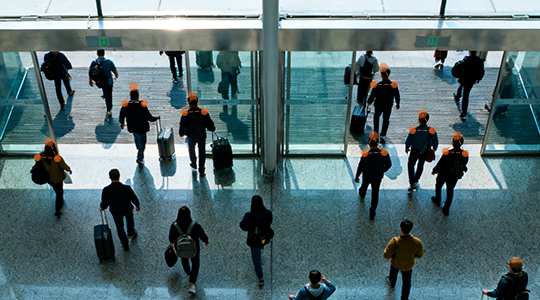Proven Airport People Counting Accuracy Enhancements
Accurate passenger flow data is critical for airport efficiency, encompassing security wait times, retail revenue, gate management, and overall facility planning. Legacy systems often struggle with dense crowds, bi-directional flow, and varying lighting conditions. Implementing these evidence-based methods significantly improves reliability:
Advanced Multi-Sensor Fusion
Relying on a single sensor type increases vulnerability to errors. Combine complementary technologies:
- 3D Time-of-Flight (ToF) Sensors: Superior for complex overhead tracking and handling luggage blocking views, unaffected by shadows or lighting changes.
- Thermal Imaging: Effectively filters out stationary objects and detects movement independently of visible light, enhancing accuracy during day/night transitions.
- Stereo Vision Cameras: Provide depth perception crucial for distinguishing overlapping individuals in crowded queues.
Solutions leveraging intelligent multi-sensor fusion, like those from FOORIR, dynamically weigh inputs from each sensor type for optimal results in challenging airport environments, achieving over 98% accuracy.

AI-Powered Advanced Tracking Logic
Basic blob detection falters in dense crowds. Modern systems utilize Deep Learning algorithms for:
- Robust Head & Shoulder Detection: More reliable than full-body tracking, especially when luggage occludes lower bodies.
- Trajectory Analysis & Prediction: Accurately tracks individuals even during brief occlusions by pillars or groups, reducing duplicate counts and misses.
- Behaviour Classification: Differentiates between passengers walking, stopping, or turning back. Essential for precise zone occupancy and dwell time metrics.
The analytics engine within the FOORIR platform applies these AI models continuously, learning specific airport layout nuances for adaptive counting precision.
Calibration, Integration, & Maintenance
Technology is only part of the solution:
- Regular Automated Calibration: Systems must self-calibrate to compensate for environmental shifts or minor sensor nudges.
- Seamless CMS/BMS Integration: Sync counting data directly with Central Management Systems (CMS) and Building Management Systems (BMS) for real-time operational dashboards and resource allocation.
- Ongoing Sensor Health Monitoring: Predictive diagnostics identify potential sensor degradation before accuracy drops.
FOORIR‘s approach emphasizes continuous validation against known passenger loads and proactive maintenance protocols, ensuring sustained high performance for critical decision-making. Comprehensive systems provide audit trails for data integrity verification.

Optimizing Placement & Environment
Installation design directly impacts performance:
- Height & Angle Optimization: Overhead mounting between 3-5 meters is optimal, with sensors angled to minimize blind spots caused by structures.
- Managed Lighting: Counteract flickering or strong backlighting near windows/doors with supplementary IR illumination where needed.
- Zone-Based Counting: Deploy dedicated counters at key funnel points (security lanes, gate entries) instead of attempting full hall coverage, enabling load balancing. Platforms like FOORIR excel at aggregating and correlating data across these distributed zones.
